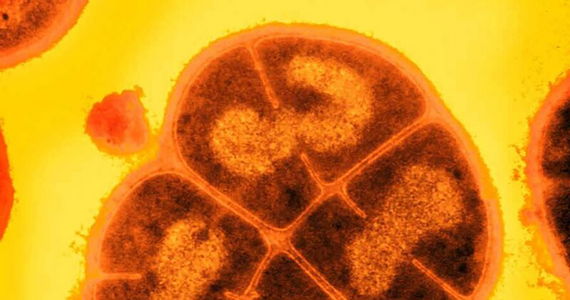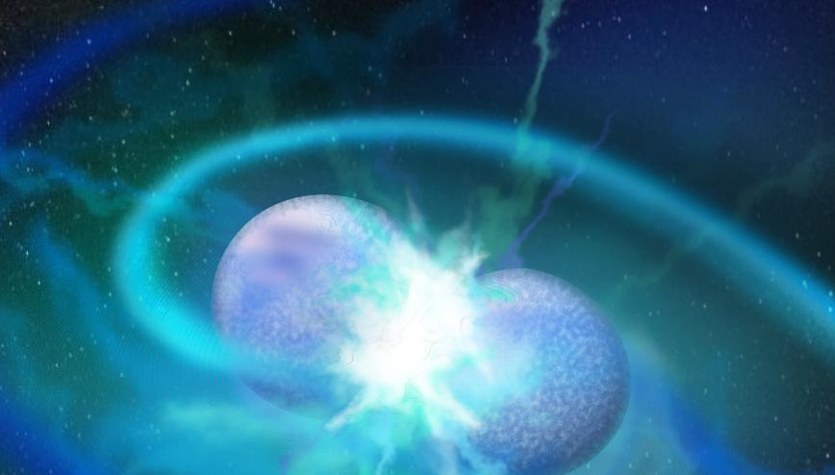If life has ever existed on Mars, its chances of survival may be greater than we previously thought. It cannot be excluded that she is still hiding there. The results of the research, published in the journal Astrobiology, indicate that beneath the surface of the Red Planet, life can remain dormant even for hundreds of millions of years. Researchers from the United States and Slovenia demonstrated this using the example of a bacterium of the type Deinococcus radiodurans, which is highly resistant to temperature, toxins and cosmic radiation. In reference to Conan the Barbarian, it is sometimes referred to as Conan the Bacteria.
Previous simulations showed that Deinococcus radiodurans could survive with doses of ionizing radiation equivalent to a million years on Mars in a dry, frozen state. The latest research shows that when buried beneath its surface, it can survive up to 280 million years. This means that future probes looking for signs of possible life up to two meters below the surface of the Red Planet, such as ExoMars (Rosalind Franklin’s rover) and Mars Life Explorer, can actually find something. And if Mars missions were to return these samples to Earth, one would have to be wary of potential lurking microorganisms.
Researchers at Northwestern University, the Uniform Services University of the Health Sciences (USUHS) and the University of Ljubljana, conducted a series of experiments to demonstrate the great danger that the bacteria brought to Mars could escape from Earth there and contaminate the Red Planet. By the way, they found out that the risk of a reverse situation, when something from Mars collides with Earth, must be looked at carefully. Conditions on the planet, more precisely below the surface, give life a chance to survive.
The study authors analyzed the survival chances of several microorganisms, Deinococcus radiodurans and Escherichia coli bacterial cells, Saccharomyces cerevisiae, Bacillus subtilis, Bacillus megaterium and Bacillus thuringiensis cells and spores. Samples were dried, frozen and irradiated. It turned out that dried and frozen samples are more resistant to radiation. And if the samples are protected from cosmic rays and ultraviolet rays by a layer of the Earth, they can remain in hibernation for a longer time.
In the case of highly resistant bacteria of the species Deinococcus radiodurans, it turned out that organisms capable of surviving in a wet state, up to a high radiation dose of 25 kg, can withstand up to 140 kg after drying and freezing. This dose is 28,000 times greater than the lethal dose for humans. In the case of bacteria of the type Bacillus, this effect was not observed, they were sterilized at a dose of 12 kGy. This difference is related to a highly efficient DNA repair mechanism in D. radiodurans.
said Michael Daley, a USUHS pathologist and member of the National Academies Committee on Planetary Protection, who led the study. In addition, these findings are important for protection against biological weapons where threats from agents such as anthrax still exist. “We found that any contamination of Mars would be practically consistent over thousands of years,” adds Brian Hoffman of Northwestern University. “This complicates any search for traces of life on Mars. If any microorganisms could have formed there, they would be able to survive to this day. This means that samples from Mars could contaminate Earth.”
Scientists believe that life may have appeared on Mars at a time when water was on its surface. However, more than two billion years have passed since then. It appears that even resistant bacteria such as Deinococcus radiodurans will not be able to survive for long. However, there is a hypothesis that avoids this hurdle. “Since liquid water has always been on the surface of Mars, the planet’s environment has periodically changed under the influence of meteorological influences. This may lead to the periodic emergence of water and nutrition and the spread of dormant microorganisms. More paths,” adds Michael Daly.

Echo Richards embodies a personality that is a delightful contradiction: a humble musicaholic who never brags about her expansive knowledge of both classic and contemporary tunes. Infuriatingly modest, one would never know from a mere conversation how deeply entrenched she is in the world of music. This passion seamlessly translates into her problem-solving skills, with Echo often drawing inspiration from melodies and rhythms. A voracious reader, she dives deep into literature, using stories to influence her own hardcore writing. Her spirited advocacy for alcohol isn’t about mere indulgence, but about celebrating life’s poignant moments.










